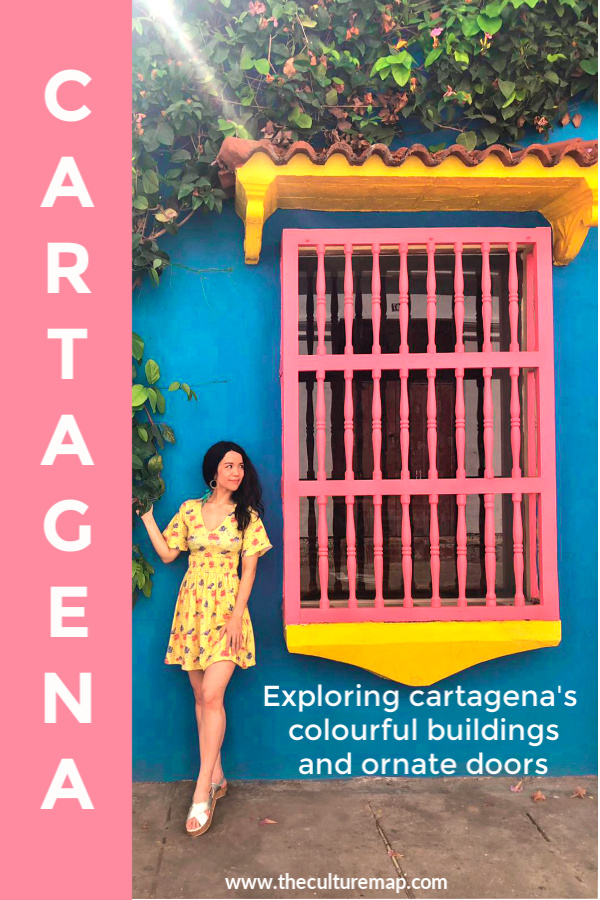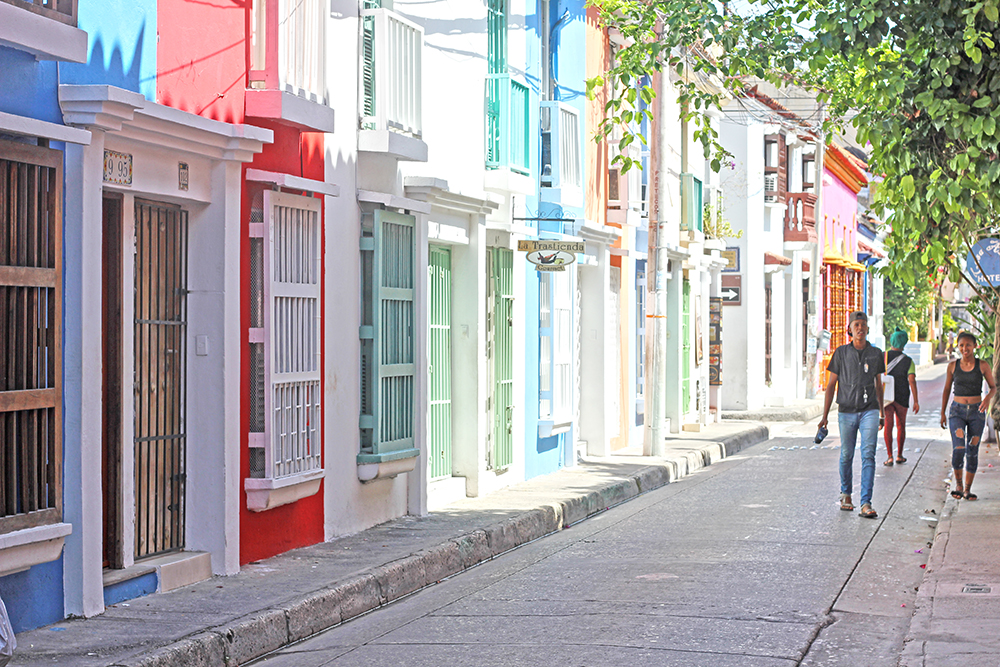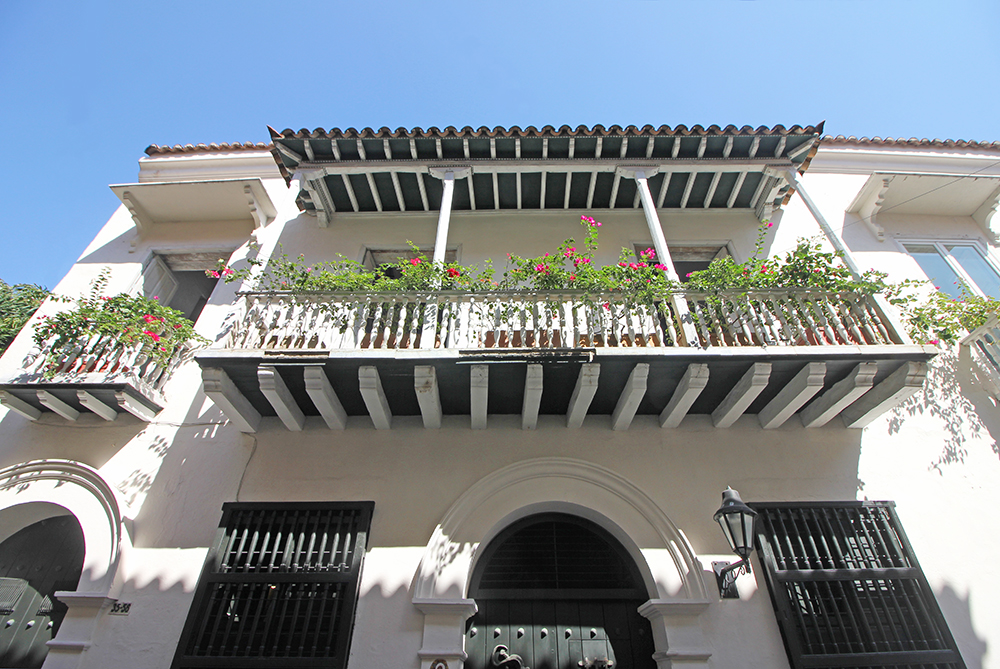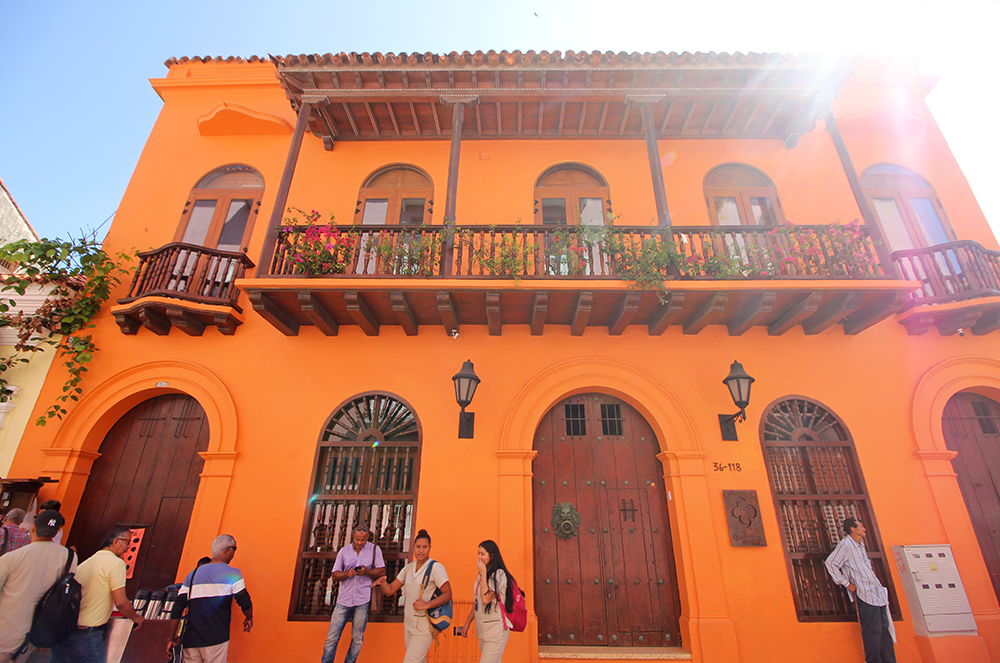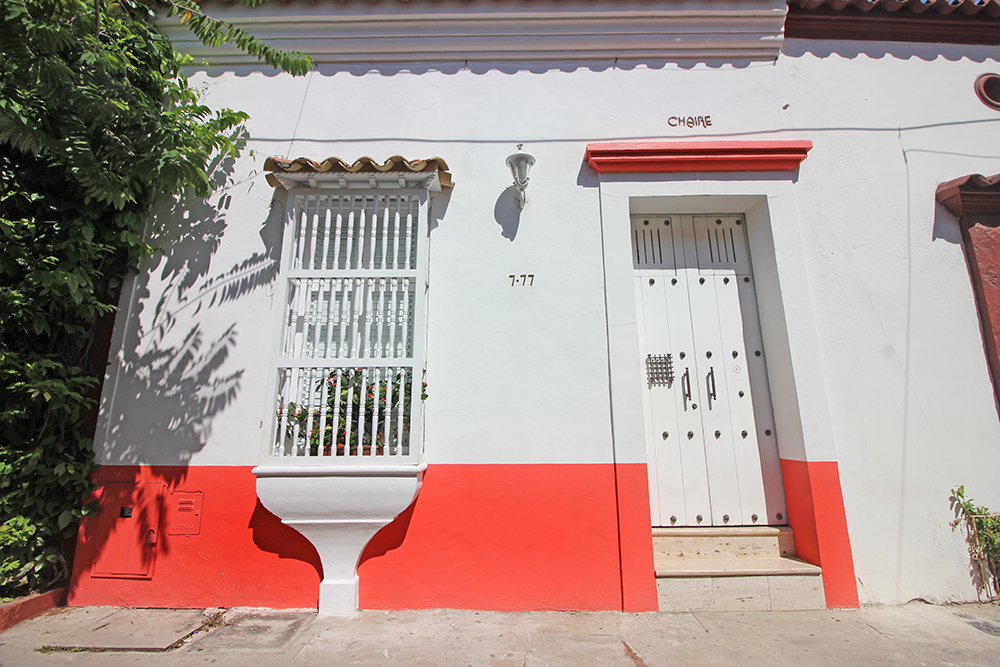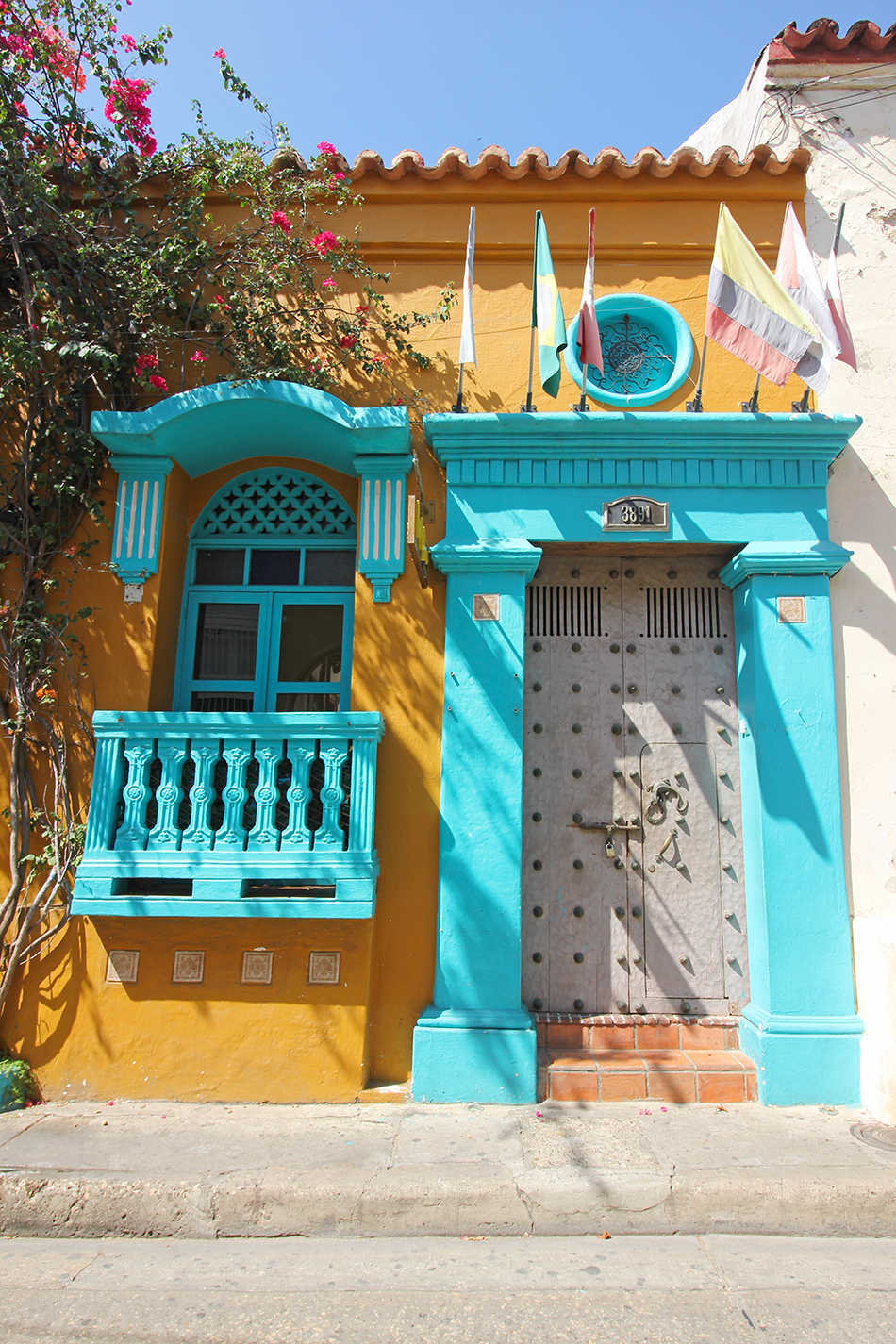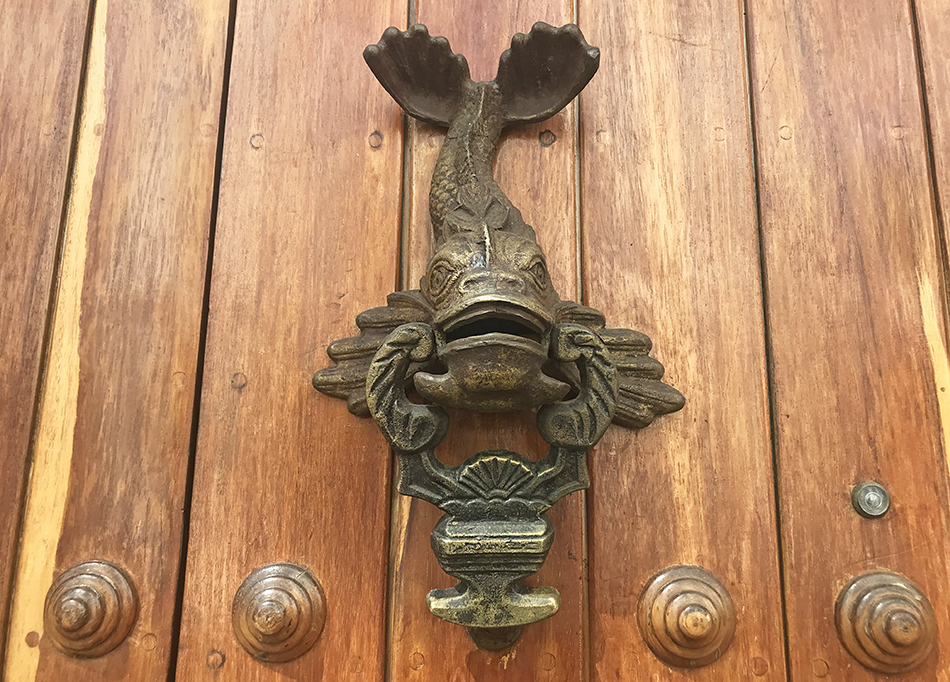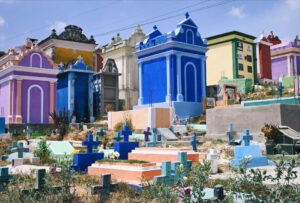I have to admit, whilst I didn’t love Cartagena, I did love all the colourful buildings. Each unique, and painted in vibrant colours of the rainbow to reflect the city’s fun and dynamic atmosphere.
If you’re wondering why I didn’t click with Cartagena, it’s because I found it a bit too touristy. That being said, I still enjoyed myself and I think the place has a lot to offer visitors. I’ve read lots of comments and articles of people waxing lyrical about the city so maybe it’s just me and my aversion to really hot weather that was also the problem.
It’s certainly an undeniably beautiful city, especially when you remember to look up. The flower-draped balconies are stunning.
A brief history of Cartagena
The city was founded in 1533 on Colombia’s Caribbean coast, due to its easy access it was the first Spanish colony on the American continent. As the Spanish plundered riches from Native Americans, including the Incas, the port of Cartagena became a nucleus for shipping the pilfered goods back to Spain.
A part of history that is often missed out of the typical narrative for tourists, is the uncomfortable fact that Cartagena prospered because of the slave trade.
At the beginning of the 17th century, the King of Spain granted Cartagena a virtual monopoly over the trade of African slaves in what is now South America. Over the years, over one million African slaves were forcibly brought through the city.
Due to Cartagena’s wealth, the city came under attack numerous times, both by pirates and European powers. To help defend the city from attack, a huge wall was built that today surrounds the Old Town (also known as the Walled City), as well as several key strategic forts.
This made Cartagena the most protected city in South America. The most impressive fort overlooks the city from the top of a 130-foot high hill, which you can still visit for commanding views of the bay in front of Cartagena.
Today, a lot has changed, but glimpses of the past, with its large fort, remain. The city has rapidly expanded and is now home to over 1 million inhabitants and is still the country’s largest port.
Due to its well-preserved architectural landmarks, sea views, and brightly coloured buildings, it is one of Colombia’s most popular tourist destinations.
Getting to know Cartagena's Old Town
As result of the city’s fortification, you will find astoundingly well-preserved colonial architecture. There are four separate districts including the Downtown or El Centro, San Diego, Matuna, and Getsemani.
El Centro is considered the heart of the Old Town due to its many rich historical buildings packed with churches, monasteries, plazas, palaces and mansions with their famous overhanging balconies and shady patios.
I stayed in El Centro and although its location is superb it is also the busiest, most touristy, and expensive area of Cartagena so if you’re on a tighter budget you might want to factor this in and stay somewhere like El Cabrero which is located just outside the Walled City.
The stunning doors of Cartagena
Whilst wondering around the Old Town, it soon became apparent that Cartagena is a city of beautiful doors. You might be wandering how gorgeous can a door really be? As it turns out: VERY!
The bright and colourful doors of Cartagena’s old town perfectly encapsulate the city’s vibrancy and they tell a story of its long history…
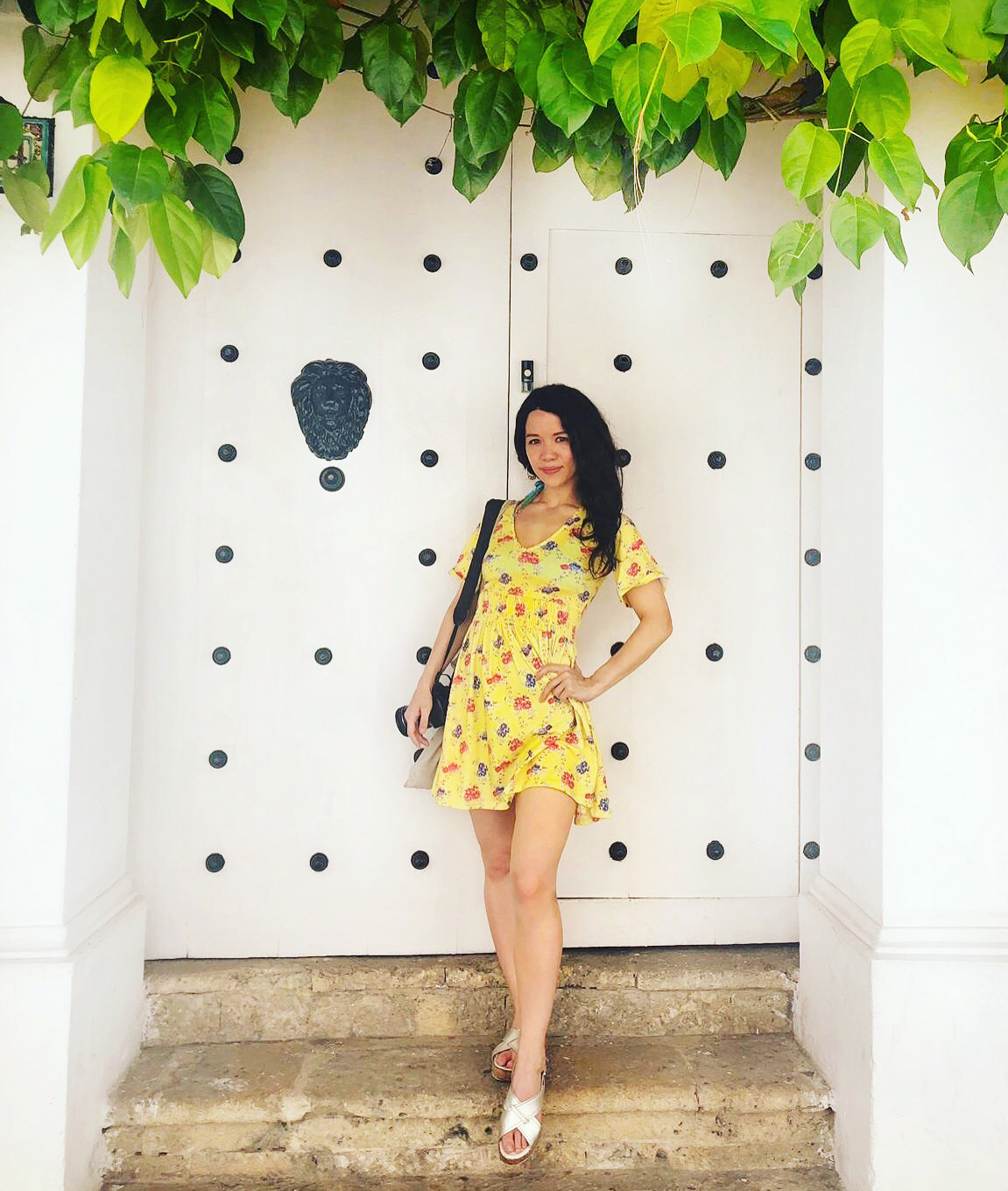
Door knockers & representation
In wealthier areas of the old town, not only are the doors larger and more elaborate but many contain intricate aldabas (door-knockers). Aldabas were a display of status in medieval times.
The size, intricacy, material, and symbol represented an owner’s wealth and position in Cartagena’s social hierarchy. For example, a lizard represented royalty, a lion meant military, while a fish or mermaid denoted sea merchants.
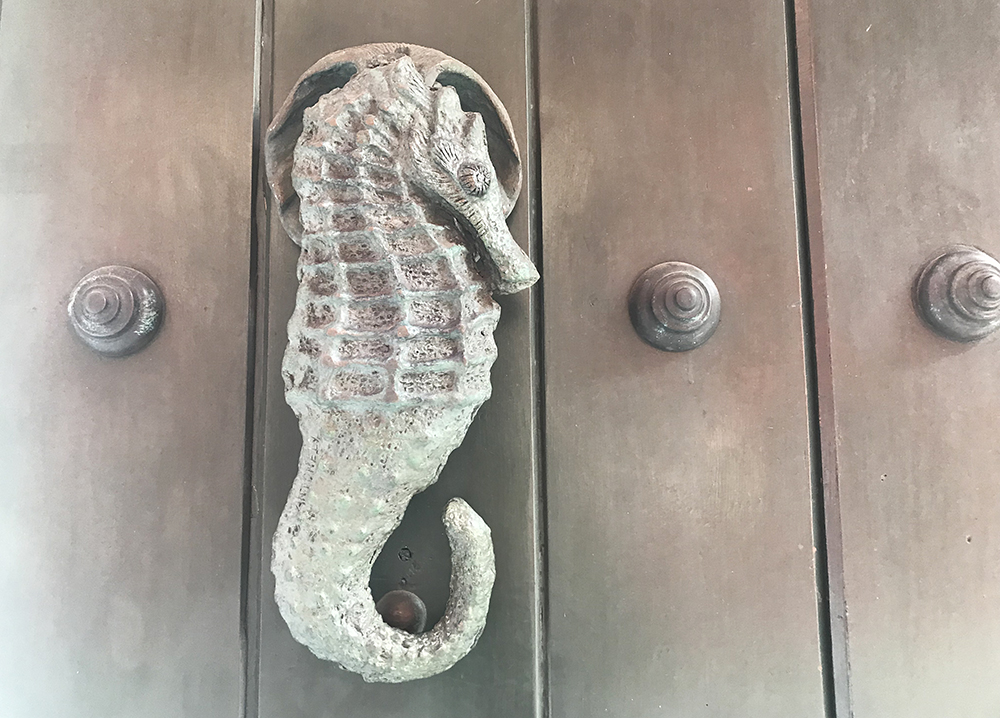
Although I found Cartagena a bit too touristy for my liking, I loved its vibrancy. The street are a kaleidoscope of bright and beautiful colours.
There’s no need for a map, or guide, or even a plan. Just walking, observing, and imagining the past.
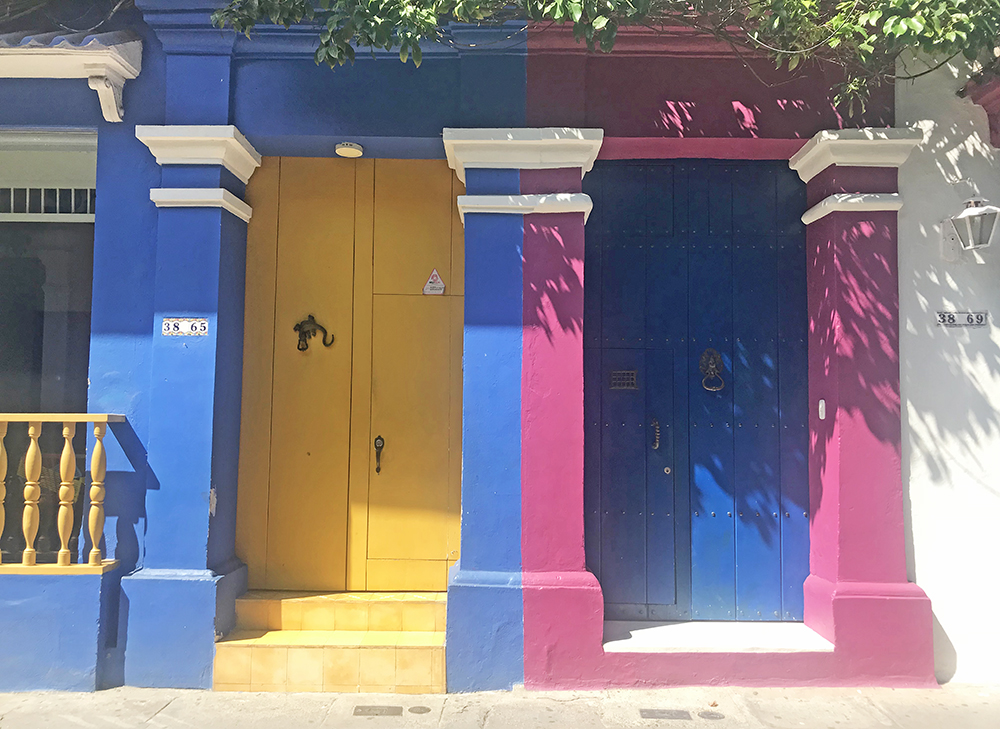
Together with its colourful streets, colonial architecture, and intricate doors, Cartagena is abound with photo opportunities.
Where to stay in Cartagena
- Old Town (Ciudad Amurallada or Walled City): As previously mentioned, this area is the heart of Cartagena’s colonial charm, with colourful buildings, historic squares, and cobblestone streets. Staying here puts you within walking distance of major attractions like the Cathedral, the Palace of the Inquisition, and numerous restaurants and shops. I stayed within the Walled City, and would especially recommend staying here if you’re only in the city for a few days.
Accommodation recommendations in the Old Town
Splurge – If you love boutique hotels, Hotel Quadrifolio is the place for you. This small luxury hotel is full of character and charm, pulling out all the stops to ensure your stay in Cartagena leaves a lasting impression for all the right reasons. After a long day of sightseeing, you’ll want nothing more but to relax in rooftop pool.
- Getsemaní: Located just outside the city walls, Getsemaní offers a more bohemian atmosphere with vibrant street art, trendy cafes, and a lively nightlife scene. It’s a bit more budget-friendly compared to the Old Town but still close enough to walk to the main attractions. If you’re more a backpacker type, or want to save money, you’ll find plenty of hostels as well.
- Bocagrande: If you prefer modern amenities and beachfront hotels, Bocagrande is the place to stay. This neighborhood is known for its high-rise hotels, luxury shopping malls, and sandy beaches. It’s a short drive or taxi ride from the historic centre. If you enjoy exploring on foot this probably isn’t the place for you, but if you have a hire-car, or what to stay or travelling with kids and looking for somewhere more spacious and close to the beach, it could be preferable that staying in the city centre.
